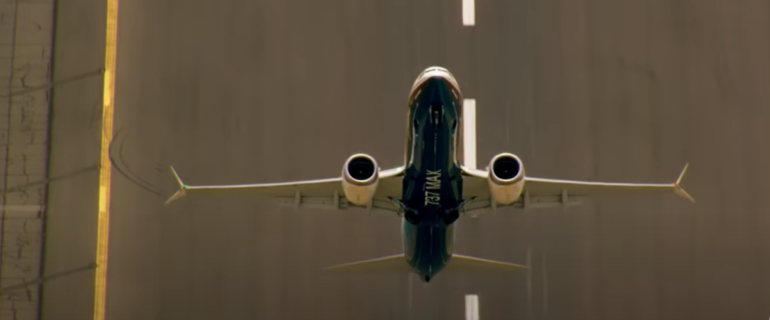All seemed fine at the beginning.
Screenshot by ZDNet
Flying involves an absolute trust in technology and the humans who operate it.
When your pilot tells you there’s a fault on one of their indicators, you believe that pilot when they tell you it’s fixed and takeoff is now safe.
In recent times, the hurriedly released Boeing 737 Max was clearly not ready for takeoff. In two horrific incidents, 346 people died. In both cases, the pilots weren’t able to handle the software in such a way as to rectify a stall.
The Max was taken out of service. However, as the nation’s focus was on all things electoral, American Airlines quietly announced that it would return the Max to its schedule next month.
European regulators have already declared the Max is safe to fly. What ‘s curious is that Boeing hasn’t yet made the software changes that European regulators insisted was necessary.
In the US, the Max has passed its certification test flights. American, though, understands that passengers will be nervous. American is trying to entice passengers to take a tour of the plane at selected airports.
This all exudes a quiet confidence. Yet it’s one thing to patch software. It’s quite another to ensure that those who operate it know all of its nuances.
So this week I was a little disturbed to read: “Southwest, American pilots say new Boeing 737 Max manual may lead to errors in emergencies.”
The pilots are concerned that the Federal Aviation Authority’s manual for handling the new software in the event of an emergency is inadequate.
They say there are simply too many steps to remember. This, they insist, has been proved in simulator flights. Yet the FAA is proposing pilot training every three years when the pilots believe it should be two.
Moreover, pressure groups such as FlyersRights.org are demanding that all documents with respect to the FAA and Boeing’s latest 737 Max testing be released publicly so that independent experts can make their own judgments.
How, then, can American’s customers be confident that the Max is safe to fly?
I’ve flown in a Max twice — a United Airlines Max. As a passenger, I was extremely conscious about the sheer size of the engines on either wing. They made the sort of sound I’d never heard on a plane before, offering what felt like a huge amount of thrust for an excessively long plane. I can’t say I was frightened, however.
Now, would I be more concerned about what’s happening in the cockpit? I would.
The Max will undoubtedly have a difficult future. Southwest Airlines doesn’t seem to be hurrying to schedule it. Airlines aren’t ordering more. Some, including Southwest, are said to be looking at Airbus alternatives instead of ordering more Maxes.
An intriguing element is whether American and other airlines will tell customers they’re flying in a Max at all.
At the end of last year, they began referring to it as the 737-8. Which is quite bizarre, given that there’s already a 737-800, a bastion of flying for many years.
While some passengers may be interested in the type of plane they’re flying, many don’t really care. They’re more interested in whether the plane is clean and whether their feet will actually fit under the seat in front.
Could it be, then, that one of the ways airlines will try and reassure passengers is to only tell them it was a Max after they’ve landed? That’s not the case with American. I checked its Miami-La Guardia schedule — the one originally targeted for the Max — and the type of plane is clearly stated as being a Max 8.
In terms of comfort, the Max has one big plus — larger overhead bins. It also enjoys criminally tiny bathrooms and seats that are thinner in order to pack more in.
This is one software update that simply cannot go wrong. It has to be absolutely perfect and enjoy the absolute confidence of those who use it.
Perhaps, though, by the time American sends its first Maxes back into the air, everyone will be so very tired that they’ll have no energy left for fear.
We’ll all just be grateful to be flying somewhere.
